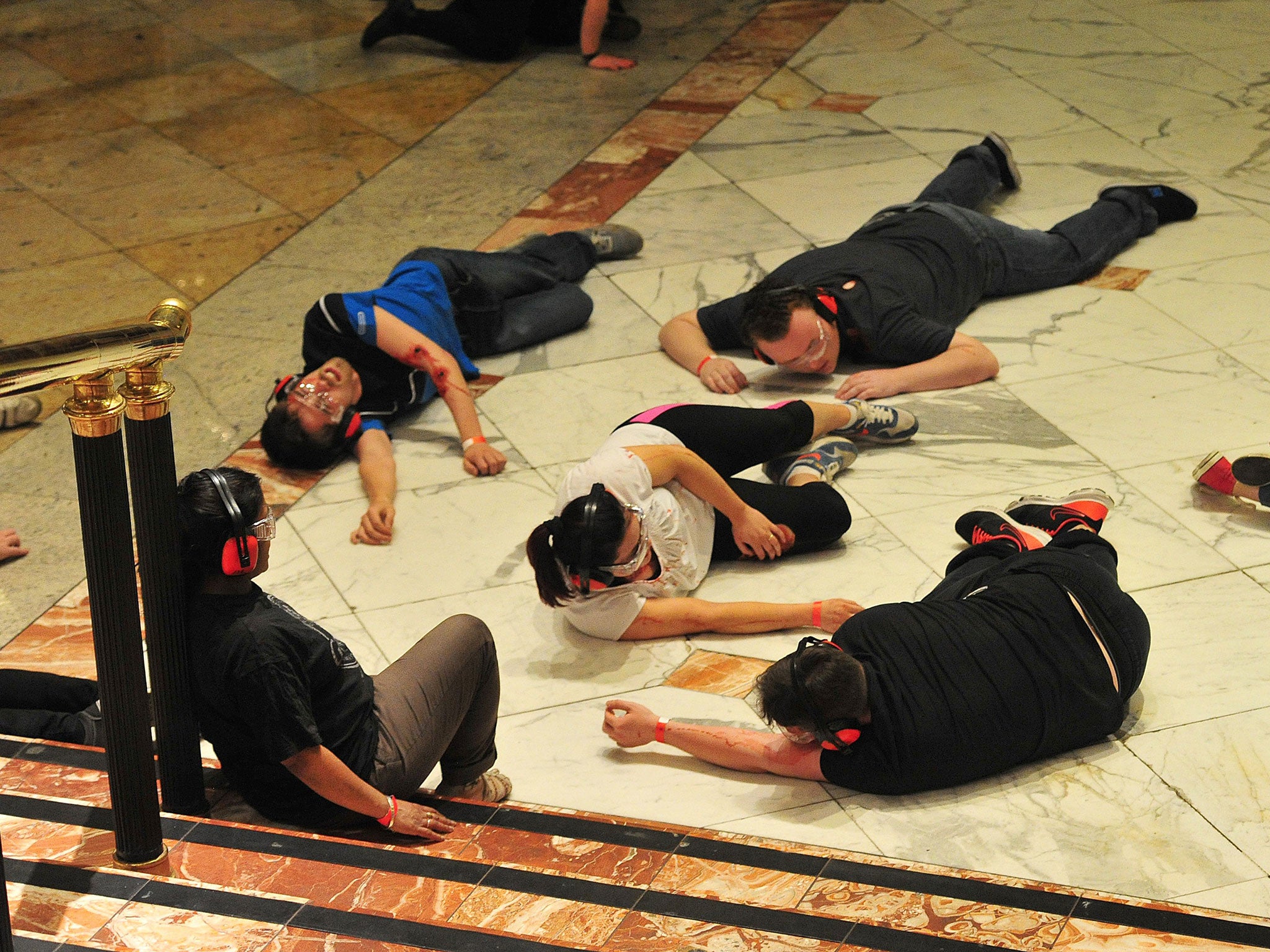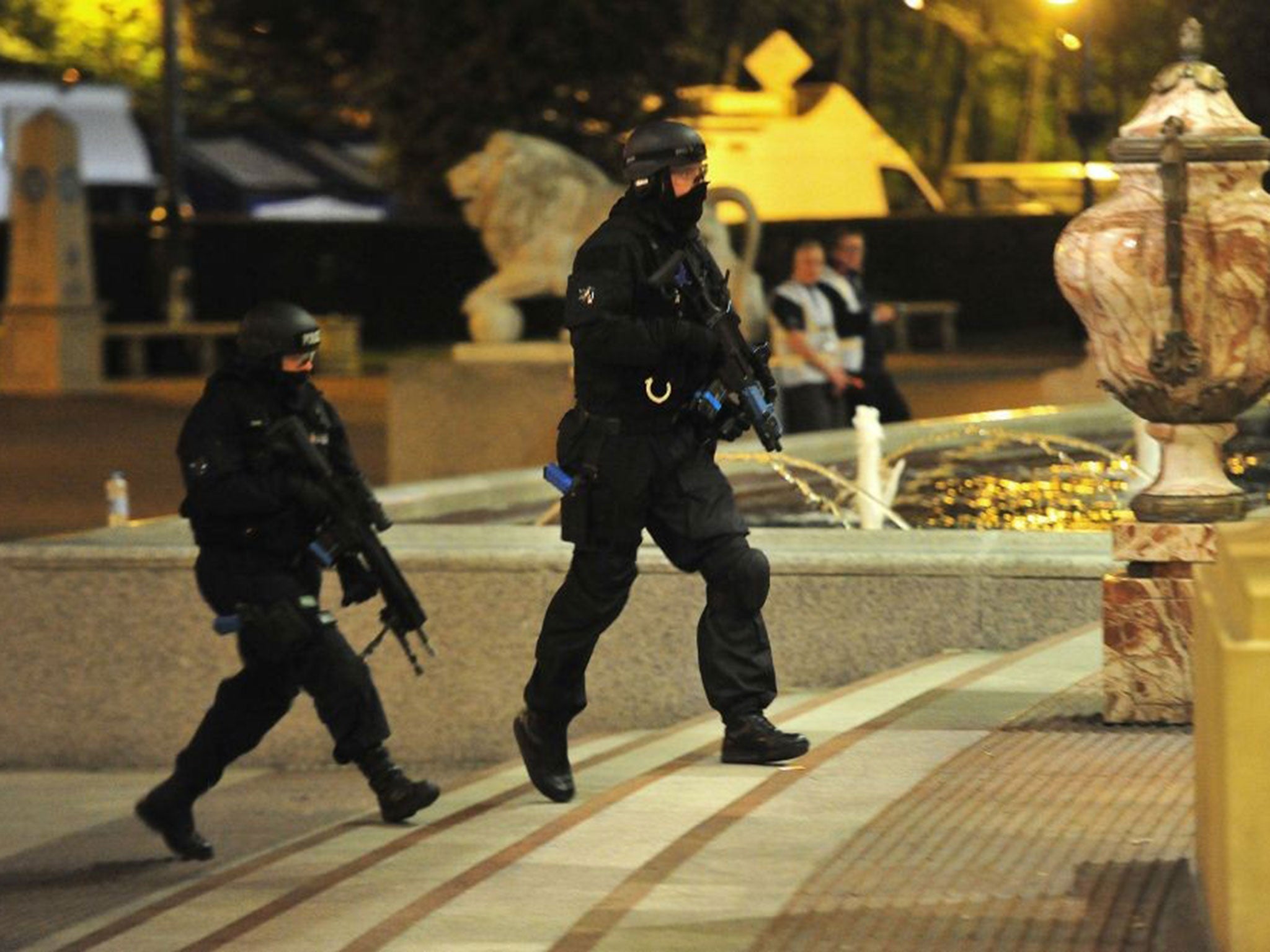'Suicide bomber' targets Trafford Centre in Manchester as part of simulated attack in counter-terror exercise
Police said there was no threat to the Trafford Centre and that the exercise was part of a nationwide programme
Your support helps us to tell the story
From reproductive rights to climate change to Big Tech, The Independent is on the ground when the story is developing. Whether it's investigating the financials of Elon Musk's pro-Trump PAC or producing our latest documentary, 'The A Word', which shines a light on the American women fighting for reproductive rights, we know how important it is to parse out the facts from the messaging.
At such a critical moment in US history, we need reporters on the ground. Your donation allows us to keep sending journalists to speak to both sides of the story.
The Independent is trusted by Americans across the entire political spectrum. And unlike many other quality news outlets, we choose not to lock Americans out of our reporting and analysis with paywalls. We believe quality journalism should be available to everyone, paid for by those who can afford it.
Your support makes all the difference.Police have simulated a terror attack at one of the UK’s largest shopping centres as part of a counter-terror exercise.
A mock suicide bomber acted out an explosion at Manchester’s Trafford Centre overnight as hundreds of people ran screaming and hid in shops and restaurants.
Around 800 people were involved in the exercise, which started at midnight, when a man dressed in black walked in and shouted at the crowd.

Moments later an explosion rocked the food hall and volunteers, wearing ear defenders and safety glasses, dropped to the floor.
Many wore make-up to simulate serious injuries and others screamed out for help in The Orient food court as the sound of gunfire rang out.
Armed officers then moved in, practicing tactics drawn up in the event of a Paris or Brussels-style attack.
Police stressed that there was no specific threat to the Trafford Centre, which is the second-largest in the UK.
Greater Manchester Police, the North West Counter Terrorism Unit and the North West Ambulance Service were all being tested, with no personnel being told precisely how the “attack” would unfold.
The Manchester Evening News reported that the SAS was also involved in the operation, which took place while the shopping centre was closed between midnight and 6am.
Greater Manchester Police had urged the public not to be alarmed by loud noises, while the Trafford Centre’s managers praised the emergency services' “great work”.
Assistant Chief Constable Rebekah Sutcliffe said agencies were testing their response to a “major terrorist incident in a public place”.
“Our priority is to stop terrorists from planning and orchestrating attacks and with exercises like this, we can put our response to the test in a safe environment, so we are fully prepared for a time when it may be critical,” she added.

“I want to make it clear that this is not linked to any specific terror threat or attack, but is an opportunity for us to make sure we are in the best position possible, should a terrorist attack happen in the North West.”
The drill was set to continue through Tuesday and Wednesday in locations in the region, including Red Bank Community Home, a disused young offenders' centre in Newton-le-Willows, Merseyside.
The exercise, codenamed Exercise Winchester Accord, was planned in December and is part of a national programme, coming after previous drills in London, Glasgow and Essex.
The current UK terror threat level is rated as severe, meaning an attack is “highly likely”, according to the Home Office’s classification system.

Join our commenting forum
Join thought-provoking conversations, follow other Independent readers and see their replies
Comments